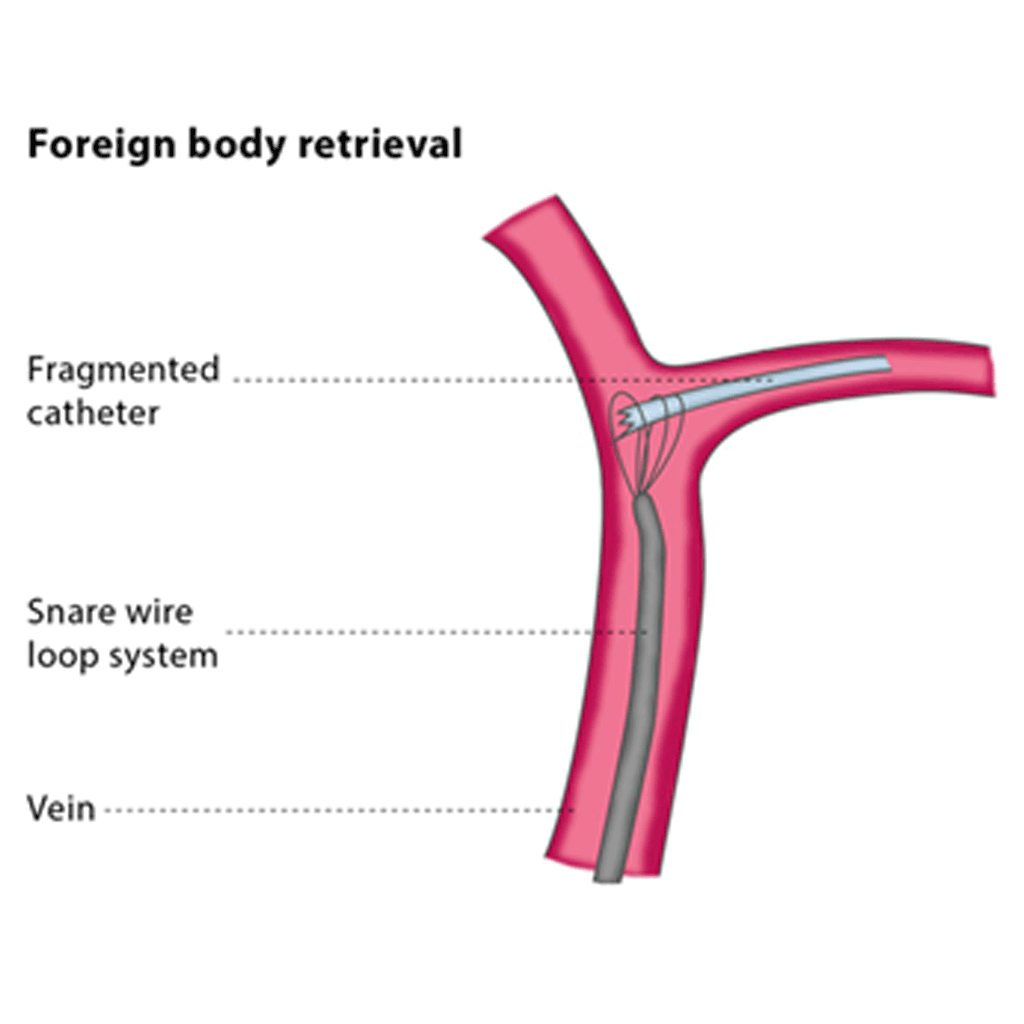IMAGE-GUIDED FOREIGN BODY RETRIEVAL
Patient Education Material
Foreign body retrieval is the removal, retrieval or manipulation of an item that has been introduced from the outside using image guidance. Foreign bodies are objects that originate outside the body and are usually the result of other medical procedures, such as endovascular (meaning in the arteries or veins) devices that have broken into smaller pieces, have become displaced or were mistakenly placed in the wrong area. Foreign bodies can also occur in extravascular locations, such as the biliary or urinary system and soft tissues.
If you are on any medication that prevents blood clotting, you will stop taking it before the procedure, if possible.
You should not eat anything for at least four hours before the procedure starts. During the procedure, a needle will be placed in one of your veins to make access easier during procedure, and the medical staff will monitor you throughout the procedure.
The technique used in the procedure depends on whether the procedure aims to remove or reposition the foreign body, as well as on the type and location of the item.
There are a number of systems and grasping devices that may be used for the procedure. The most common tool for endovascular removal is a snare device which consists of a snare wire loop, a snare catheter, a device used to insert a catheter and a device that helps move wires around during difficult procedures. The device is positioned in a blood vessel to capture the foreign body, which is then retrieved inside the introducer and out of the body.
Percutaneous foreign body retrieval is usually performed as an in-patient procedure, so you will stay in hospital overnight. The site of the puncture and your vital signs will be monitored for the first 4-6 hours following the procedure.

There are a number of reasons why you may be advised to undergo percutaneous foreign body retrieval.
There are a number of risks associated with foreign bodies, including septic complications due to bacteria on the foreign body, as well as the risk of dislocated stents and coils which may cause blood clots and restrict blood flow in the vein. Inferior vena cava filters and fragmented guidewires may pierce the wall of the vein, and cement fragments on soft tissues can be painful.
Possible vascular foreign bodies (in your veins) include a fragmented or badly positioned central venous catheter or an inferior vena cava filter, an arterial catheter or guidewire, or a displaced arterial stent or embolic materials (such as a coil or plug).
Possible non-vascular foreign bodies include displaced ureteral and biliary stents and catheters as well as cement fragments on the soft tissue.
The procedure may not be suitable for you if you have a blood-clotting disorder.
The rate of successful foreign body retrieval is very high – over 90-95% of endovascular retrieval attempts are successful. If the foreign body cannot be retrieved using a minimally invasive technique or your doctor thinks that an endovascular retrieval of the foreign body would be too difficult or too risky, your doctor may suggest the possibility of using the traditional surgical approach.
Kindly contact:
- One PKLI Avenue, DHA, Phase-6, Lahore, Pakistan.
- info@pkli.org.pk
- +92 42 111 117 554

